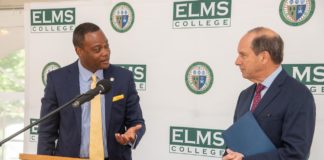
The shooting left Ms. Giffords partially paralyzed on her right side; today, after years of occupational and physical therapy, she wears a leg brace and can walk, though she often uses a cane. She can lift her right arm almost shoulder high and wiggle her fingers. She can ride a recumbent bike, is learning to write with her left hand and is relearning how to play the French horn. She can still sing certain songs, word for word.
But because the bullet destroyed neurons in the part of the brain that controls language, it robbed Ms. Giffords of a prized tool for politicians: the ability to speak fluently. Those who know her best — including Fabi Hirsch, her speech pathologist — say that does not mean she cannot communicate. She just gets her message across differently than before.
In medical terms, Ms. Giffords suffers from aphasia, a language disorder that Dr. Hirsch said affects her ability to speak and understand spoken words, as well as read and write. But her intellect and cognitive ability are intact, Dr. Hirsch said.
Ms. Giffords spent six months after the shooting at a rehabilitation hospital in Houston. With her head shaved and stitches across her skull where surgeons had removed a chunk of it, she was required to wear a helmet, which she “hated,” she said. During speech therapy, she often got stuck on a single word — a phenomenon called “perseveration,” Dr. Hirsch said.
For Ms. Giffords, the word was chicken. “Chicken, chicken, chicken,” she would repeat, over and over again.
She resigned her House seat in early 2012. Later that year, a gunman went on a rampage at Sandy Hook Elementary School in Newtown, Conn., killing 20 children and six staff members. That was the impetus for the founding of Giffords, originally called Americans for Responsible Solutions, in January 2013. Everytown was also founded in 2013, when two other gun safety groups — Mayors Against Illegal Guns and Moms Demand Action for Gun Sense in America — merged.
The movement was not especially sophisticated before Sandy Hook, said Josh Horwitz, who worked for and later ran the Coalition to Stop Gun Violence for nearly 30 years before joining the Johns Hopkins Bloomberg School of Public Health. Giffords and Everytown, he said, employed a “political campaign approach,” harnessing online fund-raising and social media in a way that enabled gun safety activists to finally compete with the National Rifle Association.








